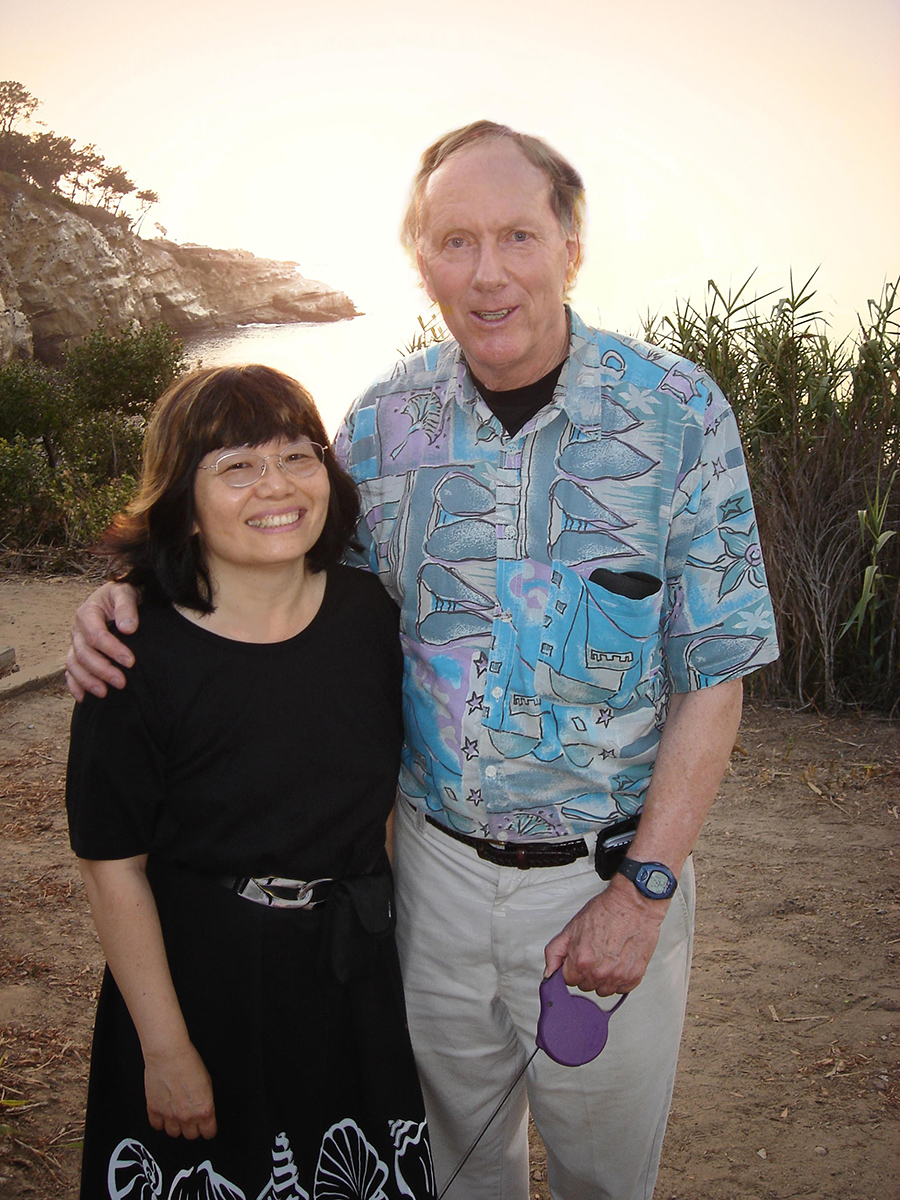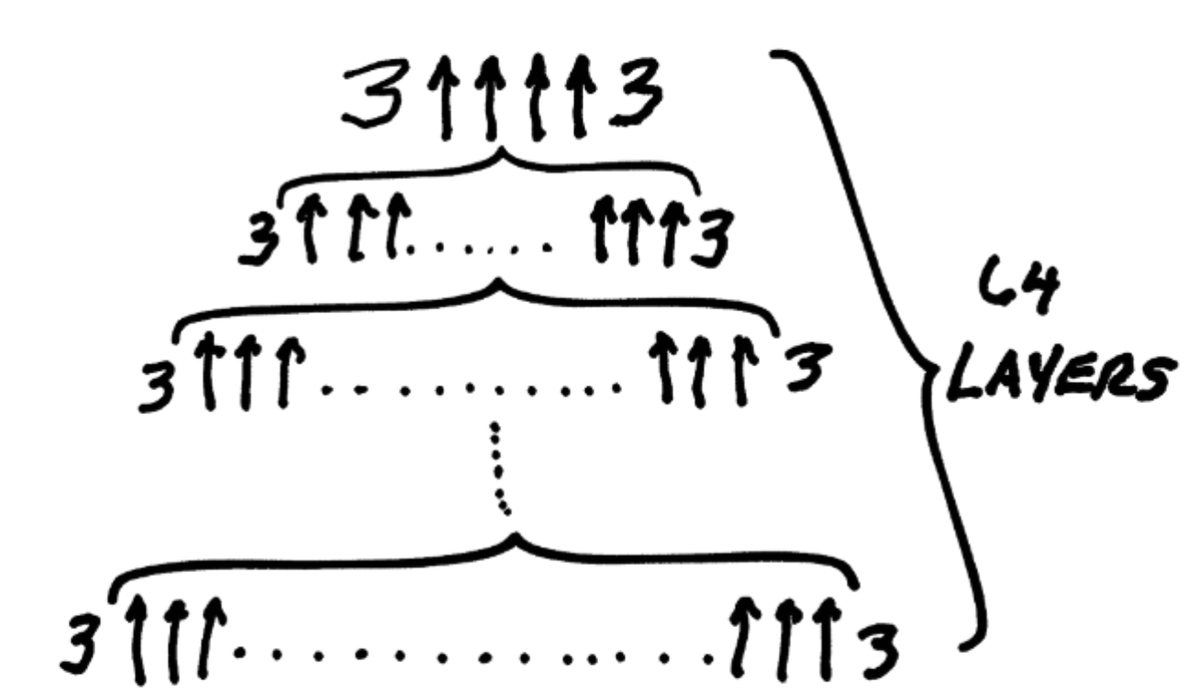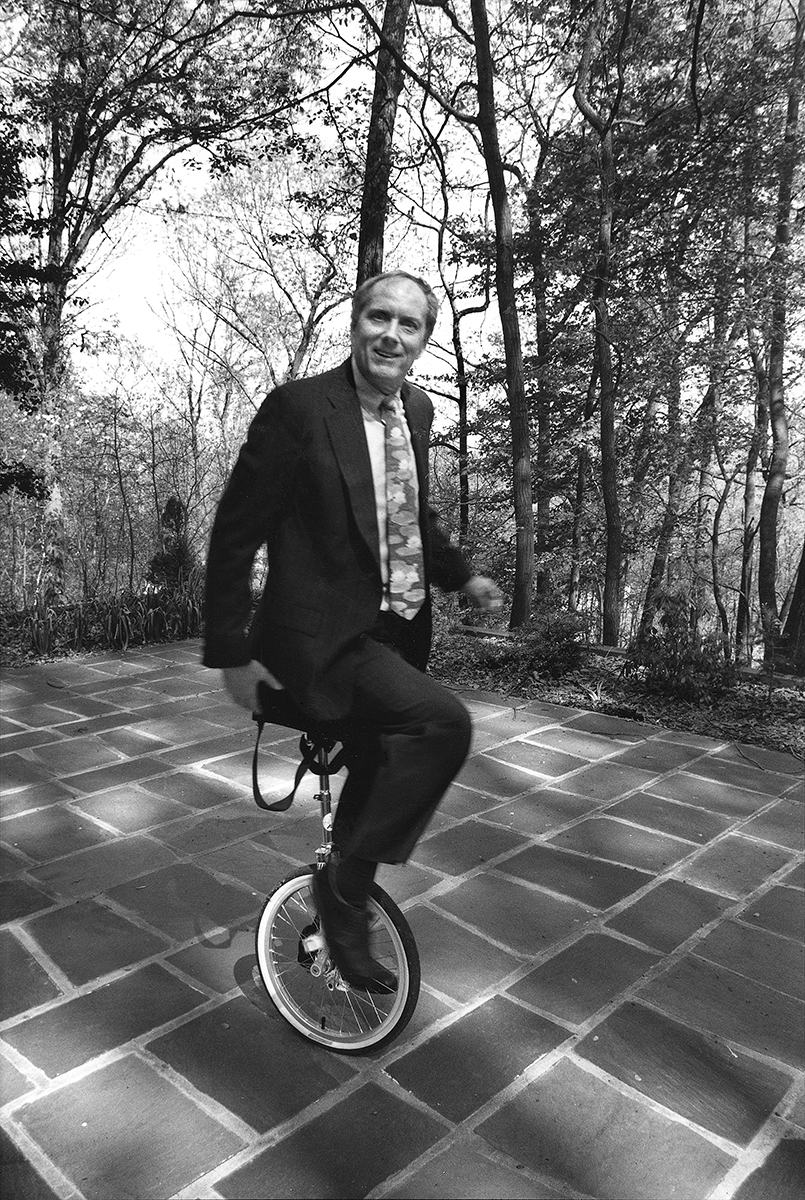Scientists Discover a New Signaling Pathway and Design a Novel Drug for Liver Fibrosis
Health & Behavior
Ron Graham, a professor of computer science and mathematics at the University of California San Diego, perhaps best known for the discovery of Graham’s number, passed away July 6, 2020 at his home in La Jolla, from complications due to bronchiectasis, a chronic lung condition. He was 84.
During a career that spanned six decades, Graham served as the president of both principal mathematical associations in the United States, and of the International Jugglers’ Association. He once said that he considered juggling a physical form of mathematics. He was also known for mathematics-based card tricks that he described in “Magical Mathematics,” a book he co-authored with Stanford mathematician and long-time collaborator Persi Diaconis. Graham was sometimes referred to as the “mathemagician.”
“He was a true giant among researchers, but also one of the nicest human beings I have known,” said Larry Smarr, founding director of the California Institute for Telecommunications and Information Technology (Calit2) and the Harry E. Gruber Professor in Computer Science and Engineering at UC San Diego. “He was one of my most important mentors, particularly during the early days of bringing up Calit2. But Ron's diverse interests were as legendary as his deep role in mathematics. That a mind of his caliber also focused on what the body could accomplish, in juggling, trampoline, and a wide array of exercise, was always a model for me.”
As a mathematician, Graham’s work helped enable the expansion of phone networks and later of Internet networks. He worked at Bell Labs for 37 years, primarily as director of information sciences. He later served as chief scientist for AT&T Labs. His research led him to focus on the complexity of routing telephone calls across U.S. time zones for AT&T. He explored the creation of a worldwide network of routers with mathematician Tom Leighton, now CEO of web and cyber security services provider Akamai Technologies. Graham joined the company’s board of directors from 2001 to 2010 and used his shares to endow the Akamai Professor in Internet Mathematics chair at UC San Diego.

Ron Graham and his wife and main research partner, Fan Chung Graham
His main research partner over the years was his wife, Fan Chung Graham, with whom he authored more than 100 papers. She is on faculty in the UC San Diego Department of Mathematics as an emerita.
“In our married life, most of the time we are doing mathematics together. It’s like our toy. And it’s particularly fun to do it with Ron. It’s why we have so many joint papers,” Fan said in the 2015 documentary “Something New Every Day,” released for her husband’s 80th birthday. “In mathematics, we usually like to see the pursuit of truth. It’s actually a very romantic goal. So you want to know what the essence of things is. It’s inherent curiosity.”
Graham joined the UC San Diego Jacobs School of Engineering in 1999 and held the Irwin and Joan Jacobs Endowed Chair in Computer and Information Science. He also served as chief scientist at Calit2 since the institute’s early days.
“Through Ron, we learned first hand what made Bell Labs such an extraordinary place," said Ramesh Rao, interim director of Calit2 and director of the Qualcomm Institute, the UC San Diego Division of Calit2. "He taught us to seek out and gather the best scholars and trust them to explore the future. That has been a guiding principle for us at Calit2."
In 2015, the university honored Graham’s legacy and contributions by establishing an endowed chair in his name: the Ronald L. Graham Chair of Computer Science, now held by Professor Ravi Ramamoorthi. That same year Graham earned a teacher of the year award at the Jacobs School. Among all the honors and accolades he received during his career, it was the only award on display in his office. Graham was a performer and enjoyed teaching because it allowed him to connect with students, said friend and research partner Steve Butler.
Graham taught Mathematics for Algorithms and Systems Analysis, also known as CSE 21, a large two-section class with more than 400 students, at the request of Rajesh Gupta, who was then the chair of the UC San Diego Department of Computer Science and Engineering.
“Students would post something like, ‘OMG, Ron Graham of Graham number/Guinness Book’ is teaching,” Gupta recalls. “And that, as I explained to Ron then, was the point of having him teach our lower division students, to catch the moments of inspiration early on for our students, a task he did with amazing stamina and effectiveness.”

The Graham number handwritten by its author.
Graham came up with the eponymous number in 1977 as an approximate solution to a complex problem in a field of mathematics known as “Ramsey’s Theory.” That area of mathematics shows that in large enough amounts of data, however random or arbitrary, local patterns will emerge. Graham’s number was at the time the largest specific positive integer ever to have been used in a published mathematical proof, and was recorded as such in the Guinness Book of World Records in 1980. (It has since been surpassed.)
Before becoming a researcher, Graham served in the Air Force for four years in Fairbanks, Alaska, with the Alaska Air Command at the Eielson Air Base.
He earned a PhD in Mathematics from UC Berkeley in 1962. He put himself through graduate school by performing in a circus trampoline act. He would still do complex trampoline tricks well into his 60s. He bought himself a hoverboard before his 80th birthday.
His long friendship with influential mathematician Paul Erdős, with whom he co-authored nearly 30 papers, also resulted in Graham’s 1979 paper that introduced the concept of an “Erdős number,” showing how closely other mathematicians were tied to Erdős based on the number of publications they co-authored with Erdős. Ron Graham’s Erdős number: 1 (reserved for Erdos’s immediate coauthors.) This concept later took hold in Hollywood as the basis of the popular “Six Degrees of Separation” game calculating how close an actor got to appearing in a movie with Kevin Bacon.
Erdős travelled a lot and never had a home of his own. So Graham always had a room available for him when he lived in New Jersey. This is a great example of Graham's generosity and willingness to share, which was experienced by everyone who interacted with him, Butler said.

Ron Graham unicycling, photographed by his daughter Che Graham.
According to the American Mathematical Society (AMS), of which he served as a past president, Graham was “one of the principal architects of the rapid development worldwide of discrete mathematics in recent years." Akamai CEO Leighton described discrete mathematics as the basis of computer science. In addition to his role with the AMS, he also served as president of Mathematical Association of America (MAA)-- the two largest associations of mathematicians-- and was selected as a member of the inaugural class of Fellows of the Society for Industrial and Applied Mathematics (SIAM) in 2009.
Among his many other prestigious appointments and honors, he received the Steele Prize for Lifetime Achievement (2003) from the AMS; the Euler Medal of the Institute of Combinatorics and its Applications (1994); the Carl Allendorfer Award (1990); and the Polya Prize in Combinatorics (1972). He also was a fellow of the inaugural class of the American Mathematical Society in 2013, the same year that he received the Euler book prize. He was a member of and served as treasurer of the National Academy of Sciences and was a fellow of the Association of Computing Machinery (ACM) and of the American Academy of Arts and Sciences. Graham also holds six honorary doctorates.
Survivors include his wife, Fan Chung Graham, and four children, Ché Graham, Marc Graham, Christy Newman and Laura Lindauer, as well as his two step children, Dean and Laura May, 11 grandchildren and his brother, Jerry Graham.
In lieu of flowers, the family requests that donations be made to the Cystic Fibrosis Foundation: https://www.cff.org/
Keep up with all the latest from UC San Diego. Subscribe to the newsletter today.